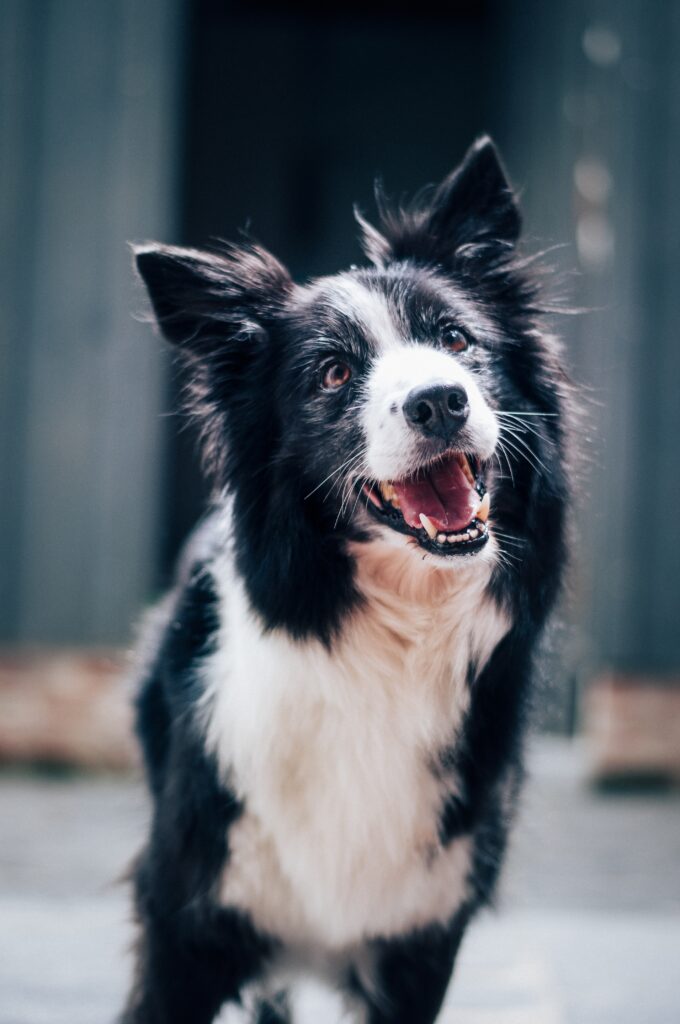Are you in search of the perfect furry friend to bring home? Look no further! This article explores the world of medium-sized dog breeds, helping you navigate through the vast variety of options to find the ideal companion for your lifestyle. From playful and energetic breeds to calm and affectionate ones, we’ll guide you through the characteristics and traits of different medium-sized dogs, ensuring that you make an informed decision and find the perfect new addition to your family.

Factors to Consider in Choosing a Medium Sized Dog Breed
When it comes to selecting the perfect dog breed for your family, there are several factors that you need to consider. Size is one of the most important considerations, and medium-sized dog breeds offer a balance between the compactness of small breeds and the size of larger breeds. Before bringing home a medium-sized dog, take a look at the following factors to help guide your decision-making process.
Temperament
The temperament of a dog breed plays a crucial role in determining how well they will fit into your family dynamic. Each dog breed possesses its own unique set of traits and personality characteristics. Some medium-sized breeds, such as the Labrador Retriever, are known for their friendly and outgoing nature, making them excellent family pets. On the other hand, breeds like the Bulldog may have a more relaxed and laid-back temperament. It’s essential to consider your lifestyle and the temperament that aligns with it when choosing a medium-sized dog breed.
Exercise Needs
Medium-sized dog breeds typically require a moderate amount of exercise to keep them happy and healthy. Daily walks, playtime, and mental stimulation are essential to meet their exercise needs. Breeds like the Boxer and Australian Shepherd have high energy levels and excel in activities such as agility training and obedience competitions. If you lead an active lifestyle or have a family that enjoys outdoor activities, a dog breed with higher exercise requirements might be the perfect fit. However, if you have a more laid-back lifestyle, you may consider a breed with lower exercise needs.
Living Space
Consider the size of your living space when choosing a medium-sized dog breed. While they are smaller than large breeds, they still require enough room to move around comfortably. If you live in an apartment or have limited outdoor space, a breed like the Cocker Spaniel or the Bulldog, which are more adaptable to smaller living spaces, might be a better choice. However, if you have a spacious backyard or live in a rural area, breeds like the Australian Shepherd or Boxer, which enjoy outdoor activities, could thrive in that environment.
Allergies
If you or a family member suffers from allergies, it’s important to choose a medium-sized dog breed that is hypoallergenic or has minimal shedding. Breeds like the Poodle are known for their hypoallergenic coat, making them an excellent choice for individuals with allergies. However, keep in mind that no dog breed is entirely hypoallergenic, and individual allergies may still vary. Consulting with a veterinarian or spending time with the breed you are interested in can help determine if there will be any allergic reactions.
Grooming Requirements
Different dog breeds have varying grooming needs, and it’s essential to consider the time and effort you are willing to invest in grooming. Breeds like the Cocker Spaniel and the Australian Shepherd have longer, more luxurious coats that require regular brushing and grooming to prevent matting. On the other hand, breeds like the Bulldog have shorter coats that are relatively low maintenance. If you prefer a breed with minimal grooming requirements, the Bulldog or Boxer might be a better fit for you.

Popular Medium Sized Dog Breeds
When it comes to medium-sized dog breeds, there are several popular options that are beloved by dog owners worldwide. Let’s take a closer look at some of these breeds.
Labrador Retriever
Origin and History
The Labrador Retriever, commonly known as Lab, originated in Newfoundland, Canada. They were originally bred to assist fishermen in retrieving nets and fish from the icy waters. Their intelligence, athleticism, and friendly nature made them popular working dogs and eventually beloved family pets.
Temperament and Personality
Labradors are known for their friendly and outgoing nature, making them excellent family pets and therapy dogs. They are intelligent and easy to train, with a natural eagerness to please their owners. Labradors are also highly social and enjoy the company of both humans and other animals.
Physical Characteristics
Labradors have a medium to large build and a well-muscled body, with males typically weighing between 65-80 pounds and females weighing between 55-70 pounds. They have a short, dense coat that comes in various colors, including yellow, black, and chocolate. Labradors have kind, expressive eyes and a friendly face that adds to their overall appeal.
Trainability
Labradors are highly trainable and eagerly participate in various activities, including obedience training, agility, and even canine sports like dock diving. Their intelligence and eagerness to please make them quick learners, and they excel in tasks that require problem-solving.
Potential Health Issues
While Labradors are generally healthy dogs, they are prone to certain genetic health conditions, including hip and elbow dysplasia, progressive retinal atrophy (PRA), and exercise-induced collapse (EIC). Regular veterinary check-ups, a balanced diet, and exercise can help mitigate the risk of these health issues.
Bulldog
Origin and History
The Bulldog, with its distinct appearance and dignified demeanor, originated in England. Originally bred for bull-baiting, a popular blood sport in medieval England, the Bulldog’s ancestors were powerful and tenacious. Over time, their temperament was selectively bred for companionship and loyalty, making them excellent family pets.
Temperament and Personality
Despite their intimidating appearance, Bulldogs are friendly, gentle, and affectionate dogs. They are known for their calm and steadfast nature, making them great companions for families with children. Bulldogs are generally sociable dogs and get along well with other animals in the household.
Physical Characteristics
Bulldogs have a sturdy and muscular build, with males weighing between 50-55 pounds, and females weighing between 40-50 pounds. They have a distinctive face with a pushed-in nose, a wrinkled forehead, and a droopy jowl. Bulldogs have a short, smooth coat that comes in various colors, including brindle, white, fawn, or a combination of these.
Trainability
While Bulldogs are intelligent dogs, they can be a bit stubborn and independent at times, making training more challenging. However, with patience, positive reinforcement, and consistency, Bulldogs can be trained with rewarding results. Early socialization and basic obedience training are highly recommended for this breed.
Potential Health Issues
Bulldogs are known for their unique physical features, which can contribute to certain health problems. They are prone to breathing difficulties due to their short muzzle and flat face, a condition known as brachycephalic syndrome. Bulldogs may also experience joint issues, such as hip dysplasia and patellar luxation. Regular veterinary care, a balanced diet, and controlled exercise can help manage these potential health issues.
Boxer
Origin and History
The Boxer, a medium-sized working breed, originated in Germany. Bred from a combination of related breeds, including the Bullenbeisser and English Bulldogs, Boxers were used for various purposes such as hunting, herding, and serving as police and military dogs. Today, Boxers are renowned for their playful and energetic nature, making them popular companions.
Temperament and Personality
Boxers are known for their high energy levels and playful nature. They are friendly, loyal, and protective, making them excellent family dogs. Boxers are particularly good with children and are often described as gentle giants. They form strong bonds with their families and are always eager to be involved in activities.
Physical Characteristics
Boxers have a strong and muscular build, with males weighing between 60-70 pounds and females weighing between 50-65 pounds. They have a square-shaped head, a strong jaw, and expressive eyes that give them a distinctive facial expression. Boxers have a short and sleek coat that comes in various colors, including brindle, fawn, and white.
Trainability
Boxers are intelligent and eager to please, which makes them highly trainable and responsive to positive reinforcement techniques. They excel in obedience training and enjoy participating in activities that challenge their physical and mental abilities. Early socialization and consistent training are essential for a well-behaved Boxer.
Potential Health Issues
Boxers are generally healthy dogs, but they are prone to certain genetic health conditions. These include heart conditions such as cardiomyopathy, hip dysplasia, and various forms of cancer. Regular veterinary check-ups and a well-balanced diet can help maintain the overall health and well-being of Boxers.
Cocker Spaniel
Origin and History
The Cocker Spaniel, known for its long, flowing ears and gentle expression, originated in the United Kingdom. They were originally bred for hunting and retrieving small game, such as woodcocks, hence the name “Cocker Spaniel.” Over time, their friendly and affectionate nature made them popular as family pets.
Temperament and Personality
Cocker Spaniels are known for their friendly, gentle, and affectionate dispositions. They form strong bonds with their families and are particularly good with children. Cocker Spaniels crave human companionship and thrive in households where they receive plenty of love and attention.
Physical Characteristics
Cocker Spaniels have a small to medium-sized build, with males weighing between 25-30 pounds and females weighing between 20-25 pounds. They have a well-proportioned body with a silky, medium-length coat that comes in various colors, including black, brown, and tan. Their ears are long and feathered, adding to their adorable appearance.
Trainability
Cocker Spaniels are intelligent and eager to please, which makes them highly trainable. They excel in obedience training and enjoy participating in tasks that engage their minds. Early socialization and consistent positive reinforcement training are important for a well-behaved Cocker Spaniel.
Potential Health Issues
While Cocker Spaniels are generally healthy dogs, they are prone to certain health conditions, including ear infections due to their long, floppy ears. They may also experience eye problems, such as progressive retinal atrophy (PRA) and cataracts. Regular grooming, including ear cleaning and eye care, can help prevent potential health issues.
Australian Shepherd
Origin and History
Contrary to its name, the Australian Shepherd is believed to have originated in the Western United States, not Australia. They were developed as herding dogs and gained popularity due to their intelligence, versatility, and exceptional herding abilities. Today, they are cherished family pets and excel in various canine sports.
Temperament and Personality
Australian Shepherds are known for their high energy levels and boundless enthusiasm. They are intelligent, responsive, and eager to learn, making them excellent working and active companion dogs. Australian Shepherds are also highly devoted to their families and form deep bonds with their owners.
Physical Characteristics
Australian Shepherds have a medium-sized build, with males weighing between 50-65 pounds and females weighing between 40-55 pounds. They have a well-muscled body with a double coat that comes in various colors, including blue merle, red merle, black, and red. The breed’s most distinctive feature is their striking, almond-shaped eyes, which can be blue, brown, amber, or a combination of these.
Trainability
Australian Shepherds are highly intelligent and excel in tasks that challenge their mental and physical abilities. They are eager to please and quickly pick up commands and tricks. Early socialization and consistent, positive reinforcement training are essential to channel their energy and intelligence effectively.
Potential Health Issues
Australian Shepherds are generally healthy dogs, but like many herding breeds, they can be prone to certain genetic health conditions. These include hip dysplasia, progressive retinal atrophy (PRA), epilepsy, and certain allergies. Regular veterinary care, a balanced diet, and appropriate exercise can help maintain the overall health of Australian Shepherds.

Other Medium Sized Dog Breeds to Consider
In addition to the popular breeds mentioned above, there are several other medium-sized dog breeds that deserve consideration. Each of these breeds has its own unique set of characteristics and qualities that may align with your lifestyle and preferences. Let’s take a closer look at some of these breeds.
Whippet
Origin and History
The Whippet is a medium-sized sighthound that originated in England. They were originally bred for racing and hunting small game, such as rabbits. Whippets are known for their incredible speed and agility, making them excellent contenders in canine sports like lure coursing and racing.
Temperament and Personality
Whippets are gentle, affectionate, and often described as “couch potatoes” when indoors. They are calm and quiet dogs that typically make excellent companions for families and individuals of all ages. Whippets get along well with children and other animals when properly socialized.
Physical Characteristics
Whippets have a sleek and athletic build, with males weighing between 25-40 pounds and females weighing between 20-35 pounds. They have a short, smooth coat that comes in various colors and patterns. Whippets have a graceful and elegant appearance, with a slim and aerodynamic body built for speed.
Trainability
Whippets are intelligent dogs, and while they may have an independent streak, with proper training and positive reinforcement techniques, they can be trained well. They respond best to gentle and patient training methods, as harsh or forceful methods can be counterproductive.
Potential Health Issues
Whippets are generally healthy dogs, but like many sight hounds, they may be more prone to certain health conditions. These include potential eye issues, such as progressive retinal atrophy (PRA) and certain cardiac conditions. Regular veterinarian care and a balanced diet are essential for maintaining the overall health and well-being of Whippets.
Poodle
Origin and History
The Poodle is an elegant and versatile breed that comes in three recognized sizes: standard, miniature, and toy. Though often associated with France, Poodles actually have roots in Germany. They were initially bred as water retrievers, known for their ability to retrieve waterfowl in marshy environments.
Temperament and Personality
Poodles are intelligent, lively, and eager to please, making them highly trainable and adaptable. They are known for their friendly and playful nature, making them excellent family pets. Poodles form strong bonds with their families and enjoy being involved in various activities.
Physical Characteristics
Poodles come in three different sizes, and each size has its own specific weight range. Standard Poodles typically weigh between 45-70 pounds, miniature Poodles weigh between 10-15 pounds, and toy Poodles weigh between 4-6 pounds. They have a curly or corded coat, which doesn’t shed much and is often considered hypoallergenic.
Trainability
Poodles are highly intelligent and possess a natural ability to learn and perform tasks. They excel in various activities, including obedience training, agility, and even hunting. Poodles are quick learners and thrive in environments that provide them with mental stimulation and positive reinforcement training methods.
Potential Health Issues
Poodles are generally healthy dogs, but they can be prone to certain genetic health conditions. These include hip dysplasia, progressive retinal atrophy (PRA), epilepsy, and certain skin allergies. Regular veterinary care, proper grooming, and a balanced diet can help minimize the risk of potential health issues in Poodles.
In conclusion, when choosing a medium-sized dog breed, it’s important to consider factors such as temperament, exercise needs, living space, allergies, and grooming requirements. Each breed discussed here offers a distinct set of characteristics and qualities, ensuring there’s a perfect companion for every type of family or individual. Remember to consider your lifestyle, living arrangements, and preferences to find the ideal medium-sized dog breed that will bring joy and companionship to your life.